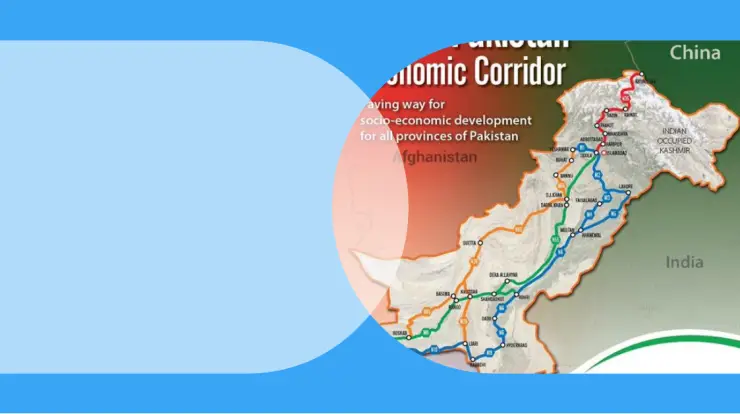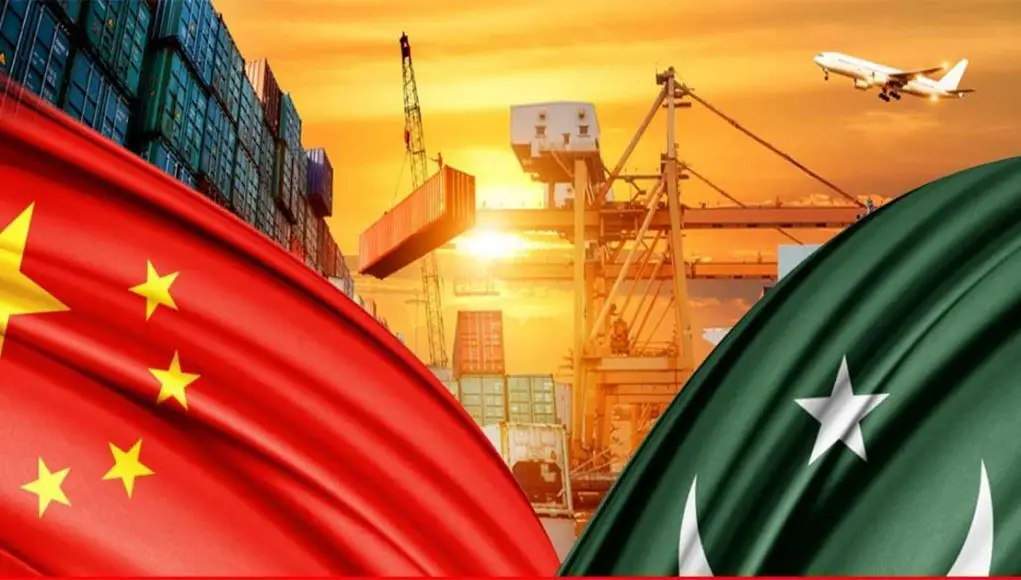
The China Pakistan Economic Corridor (CPEC) is a cornerstone of Pakistan’s economy, representing over $60 billion in pledged Chinese infrastructure investments in transportation networks, energy projects, and special economic zones.
While much attention centers on districts of Punjab and Sindh, the role of Balochistan represents major opportunities but also reflects sobering concerns if local communities fail to reap benefits.
This analysis will examine Balochistan’s positioning, projects to date in the western province, economic priorities under CPEC, impacts on employment and skills development, local security implications, environmental effects, and recommendations for maximizing opportunities in one of Pakistan’s least developed regions.

Balochistan Holds Strategic Importance in CPEC
As CPEC forms a land and maritime “Silk Road” between Western China, Middle East and Africa, [map of CPEC routes].
Balochistan represents critical territory for new development corridors between China’s western Xinjiang province through Pakistan linking key deep sea port in Gwadar where the Arabian Sea shipping lanes meet.
The central positioning makes Balochistan indispensable for CPEC and regional connectivity:
- Borders Iran and Afghanistan – prime position for trade
- Links China to maritime oil trade bypassing sea lanes
- Gwadar Port as gateway between East and West
- Vast mineral and fossil fuel reserves
However, to date, Balochistan remains largely bypassed from CPEC opportunities centered further east. Of $62 billion in planned projects, less than 8% involved western or Balochistan districts as of 2022 according to leading research.
Can new initiatives turn the tide to make deals more equitable and stabilize restive local regions?
CPEC Investments and Projects in Balochistan
While still outweighed by Punjab and Sindh based infrastructure, major CPEC projects in Balochistan already underway or completed include:
Gwadar Port and Free Zone
- Chinese Overseas Port Holding Company leased Gwadar Port for 40 years
- Multi-billion dollar investment developing special economic zone, international airport, hospitals, vocational training centers and supporting infrastructure
Eastbay Expressway
- $168 million expressway connecting Gwadar Port to coastal highways towards Karachi
- Part of planned Gwadar Smart Port City Masterplan
300 MW Coal Power Plants
- $542 million projects in Gwadar and Hub region supplying electricity
Upgrades at Quetta and Turbat Airports
- Expansion projects underway to support CPEC economic zones
Hundreds of Kilometers of Highways
- N85 toll highway from Gwadar to Chaman border crossing
- M8 linking Ratodero and Khuzdar under construction
- Other arterial roads in planning pipeline
So while critics contend Balochistan’s role in CPEC remains limited, billions in commercial infrastructure form key foundations aligned with the region’s priorities.
Strategic Economic Priorities for Balochistan Under CPEC
Balochistan remains the most impoverished of Pakistan’s provinces – with over 70% classified as poor by leading economic measures.
| Socioeconomic Indicator | Balochistan | National Average |
|---|---|---|
| Poverty Rate | 71.6% | 24.3% |
| Primary School Enrollment | 47% | 57% |
| Literacy Rate | 41% | 60% |
| Infant Mortality Rate | 64 per 1000 births | 62 per 1000 births |
| Access to Electricity | 71% | 91% |
| Access to Improved Sanitation Facilities | 39% | 66% |
The Balochistan government has lobbied for increased investments under CPEC’s next phase focused in key strategic areas:
Gwadar Port Commercialization
- Accelerating operations of deep sea commercial port
- Linked industrial zones to attract manufacturers
Mineral Extraction
- Vast mineral reserves including gold, chromite and copper
- Mine development to drive exports
Oil and Gas
- Home to substantial oil fields and natural gas reserves
- Pipeline infrastructure connecting Iran
Urban Development
- Smart cities and economic zones around port connecting east
- Improving livability to draw skilled talent
Agriculture Modernization
- Just 5% of arable land currently cultivated
- Water management and crop maximization programs
With sustained long-term investments in these areas, Balochistan political leadership envisions transitioning from a remittance based economy to an exporting powerhouse.
But will economic priorities translate into jobs and opportunities for local communities?
Job Creation and Skills Development in Balochistan
For CPEC projects to uplift rather than extract from Balochistan, jobs, education and skills development prove critical – especially for restless youth populations.
CPEC Related Job Creation
- Over 75,000 direct jobs will stem from infrastructure projects in Balochistan like Gwadar Port and connecting highways as part of a national target of 2.3 million CPEC created jobs by 2030 according to government studies.
- However, independent estimates contend far fewer permanent jobs will remain after construction ends. And local Baloch have seen limited hiring vs. imported Chinese and other Pakistan labor.
Skills Training Centers
- Balochistan technical education remains severely underdeveloped trailing all other provinces.
- Chinese funded vocational institutes seek to directly train talent for CPEC priority industries like mining, maritime and agriculture.
- Gwadar Skills Development Institute represents flagship center providing engineering, business, IT and language certifications.
In the long run, Balochistan’s economic transformation relies on a knowledgeable local workforce able to collaborate on global initiatives. Without mobilizing human capital, the gap between provincial and national growth rates will continue widening.
Education beyond short term construction trades proves vital for ensuring lasting impact.
Security Concerns Around CPEC in Balochistan
Security represents an overriding issue in making CPEC successful to uplift rather than endanger locals according to leading regional experts.
Baloch insurgent groups including the Balochistan Liberation Army (BLA) have waged attacks against CPEC infrastructure projects and Chinese workers within the province.
Their stated objections include exploitation of Balochistan’s resources by foreign entities and central government in Islamabad without consent or return investment into local education, health and development.
However, militant attacks gravely threaten stability and hopes for improved livelihoods from cross-regional development. Reported attacks include:
- 15 Chinese engineers killed by Baloch separatists at Gwadar Port site in 2022
- Dozens of paramilitary troops killed guarding Chinese mining sites
- Hotels and Chinese consulate attacked by insurgents groups
Pakistan responds with accusations of foreign supported insurgenciesaimed at subverting CPEC progress out of competing interests.
Without reconciling regional tensions, the promise of economic uplift will remain constrained by cycles of violence, no matter the scale of investments. Engagement with local stakeholders remains vital.
Environmental Impacts on Balochistan
Mega transportation corridors and linked industrial zones raise further concerns around impacts to land, marine ecosystems and climate arising from unchecked development.
Land Development and Water Scarcity
Mass industrialization and cultivated lands for export crops squeeze indigenous communities reliant on grazing lands and local water access. Drought prone Balochistan faces heightened water scarcity risk.
Coastal Ecosystems
Dredging, shipping and runoff threaten delicate coastal mangroves and fisheries productivity – vital to subsistence economy.
Climate Change Effects
Carbon-centric industry and emissions trajectories risk exacerbating climate shifts – spurring exodus from parched rural districts.
Environmental stewardship and climate resilience must intertwine with economic priorities to ensure sustainable livelihoods.
UN principles on equitable climate strategies advocate for “leapfrogging” – adopting next generation clean technologies rather than outdated polluting industries. Such visionary approaches will determine if CPEC unlocks lasting prosperity.
Maximizing Benefits to Balochistan: Key Recommendations
The recommendations below intend to reconcile tensions around equitable development, job security, cultural autonomy and environmental sustainability in the context of massive CPEC investments on the horizon:
Inclusive Development Planning: Form representative multi-stakeholder committees allowing local communities to shape development vision tied to priorities like renewable energy, water access, rural investments etc.
Skills and Education Planning: Set explicit minimum targets for employment and sourcing from local firms to prevent domination of imported labor. Invest concretely in technical skills programs tailored to priority industries identified by Baloch stakeholders.
Cultural and Linguistic Protections: Enshrine protections around cultural resources and regional languages into special economic zones drawing diverse foreign workforces to prevent erosion of cultural assets. Enforce codes of conduct respecting Baloch cultural autonomy.
Land and Marine Conservation Targets: Conduct rigorous environmental impact assessments for coastal development and inland projects. Designate protected conservation zones. Adopt sustainability provisions and monitoring ensuring net positive ecosystem impacts.
Renewable Energy and Climate Resilience: As arid region facing acute climate shift threats, prioritize next generation renewable energy, water conservation and regenerative agriculture models in line with Paris climate goals. Build climate resilient settlements.
While CPEC will indelibly reshape the province, thoughtfully charting the course embracing international principles, sustainability imperatives and local participation offers greatest promise for posterity.
The path ahead remains fraught but the most vital opportunities lie less in megaproject signatures – and more in stewarding lasting, equitable change empowering youth through skills and sound governance. With long term vision, Balochistan can transform strategic geography into shared prosperity.
